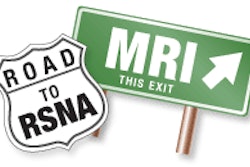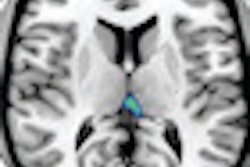The researchers found that significant improvements in the signal-to-noise and contrast-to noise ratios were key to the image and time improvements.
"Multitransmit MR allows for patient-adaptive [radiofrequency] shimming, which reduces dielectric shading on MR images, thus improving image quality," said study co-author Christopher Filippi, MD.
In the study, 10 healthy volunteers had lumbar T1-weighted MRI scans, while nine healthy volunteers had T2-weighted MRI scans. Sagittal and axial T1- and T2-weighted images were acquired using multitransmit MR and conventional MRI.
The image analysis showed that contrast-to-noise and signal-to-noise ratios both showed statistically significant improvement at all levels, except for the axial T2-weighted signal-to-noise measurement.
"With improvements in contrast-to noise and signal-to-noise ratios, and with better homogeneity of flip angle and with the B1 shimming that multitransmit allows, you can scan more quickly," Filippi added. "Our typical routine lumbar spine MR exam lasts 20 minutes or less, so patients with back pain have a greater chance of exam completion and this improves throughput on the clinical schedule."
Filippi and colleagues currently are investigating lesion detection with multitransmit to determine if there are similar improvements in the cervical and thoracic region.



















